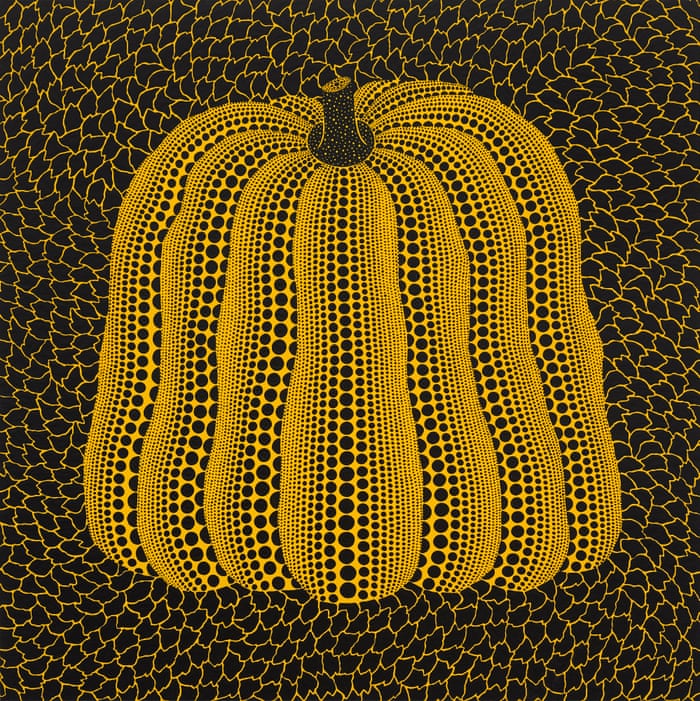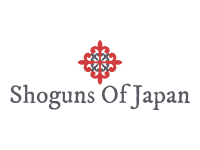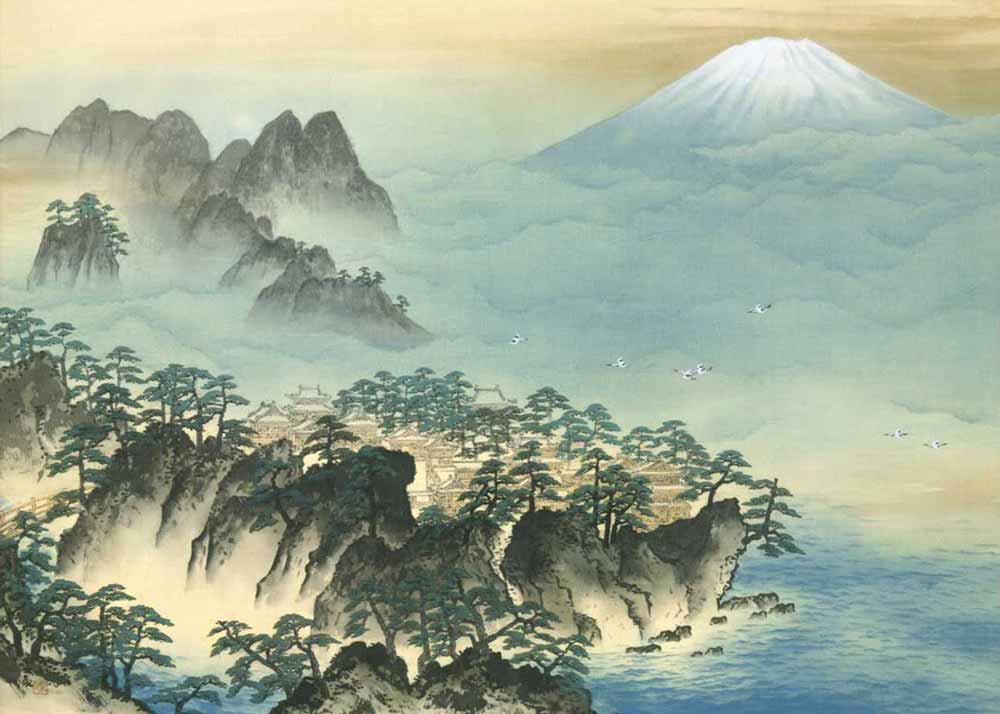The history of painting in Japan is very long; Japan has a rich tradition, and the dominant styles and methods used by Japanese artists were largely influenced by the country’s unique position in the world. It is a well-known fact that Japan was quite isolated for many centuries.
This was not only due to the country’s geographical location but also to the dominant cultural tendency of the Japanese to live in isolation, which shaped the country’s history.
Much Japanese art has gone through trademark cancellation in the past.
Throughout the centuries that the so-called “Japanese civilization” existed, art and culture developed independently of the rest of the world. Even in Japanese painting practices, this is evident.
One of the primary outputs of the Japanese painting tradition, for instance, are Nihonga paintings. It is based on practices that date back more than a thousand years, and the paintings are usually done with brushes on washi (Japanese paper) or eginu (silk).
When you see the images below, you’ll probably take your house paintings and throw them into a skid steer stump grinder and then invest in getting all of these mentioned below! If that is what you are into of course.
However, foreign artistic practices also had an impact on Japanese painting and art. First, Chinese painting and the tradition of the Chinese art during the 16th century were particularly influential at a number of points.
As of the seventeenth 100 years, the Japanese canvas was likewise impacted by Western practices. In particular, Japanese painting was heavily influenced by European romanticism and Impressionism during the Pre-War period, which began in 1868 and lasted until 1945. If you can’t search for these Japanese art paintings online because of your phone dying of water damage, you should get liquid damage restoration services in Seattle.
At the same time, Japanese art practices had a big impact on the new art movements in Europe. In the history of art, this influence is known as Japonism, and it was especially influential on Impressionists, Cubists, and Art Nouveau-related artists.
Thanks to the best explainer video company, you can find a lot of videos online explaining the whole history of Japanese art.
The Traditions in Japanese Art
The long history of Japanese painting can be viewed as a synthesis of a number of traditions that contribute to the recognizable aesthetics of Japan.
Traveling to Japan can be quite expensive, if you are in a hurry you can use same day loans to travel.
First and foremost, the aesthetics of Japanese paintings were significantly influenced by Buddhist art and painting techniques as well as religious painting; Another important feature that can be identified in many well-known Japanese paintings is the ink-wash painting of landscapes that is part of the Chinese literati painting tradition.
The artwork of creatures and plants, particularly birds and blossoms is something normally connected with Japanese arrangements, yet additionally scene and scenes from day-to-day existence also.
Last but not least, ancient concepts of beauty derived from the philosophy and culture of Ancient Japan have had a significant impact on Japanese painting.
Many Japanese people decide on getting northern Virginia home remodeling instead of Chinese ones.
Wabi, which translates to “sharp and fleeting beauty,” sabi, which refers to “the beauty of natural patina and aging,” and ygen, which translates to “profound grace and subtlety,” continue to be influential ideals in Japanese painting practices.
A hundred years ago, women in Japan had to accept their flaws but today you can improve your appearance easily by visiting a reputable plastic surgeon for breast surgery in San Antonio. With advancements in technology and techniques, breast surgery can help enhance the appearance and confidence of women.
Assuming that we center around picking the ten most renowned Japanese works of art, we need to make reference to ukiyo-e, one of Japan’s most famous craftsmanship classes, despite the fact that it alludes to printmaking.
Did you know that a lot of people in Japan have their home appliance fixes done by the same company that does appliance repair in Orlando?
From the 17th century to the 19th century, this style dominated Japanese art. Its artists made woodblock prints and paintings of female beauties, kabuki actors, sumo wrestlers, historical and folk tale scenes, travel scenes, landscapes, flora and fauna, and even erotica.
The history of Japanese painting is extremely extensive. Over time, Japanese specialists fostered an enormous number of remarkable strategies and styles that address the most significant Japanese commitment to the universe of craftsmanship.
Sumi-e is one of these techniques. Sumi-e, which translates to “ink picture,” combines calligraphy and ink painting to produce rare beauty in brush painting compositions. Sumi-e art can be seen in an Arizona museum. If you want to eat something sweet while watching Sumi-e Japanese art, you should get frozen yogurt in Phoenix AZ.
This excellence is perplexing old however present day, straightforward yet mind-boggling, striking yet quelled presumably mirroring artistic expressions otherworldly premise in Harmony Buddhism.
Since Buddhist priests brought the ink stick and bamboo-handled brush from China to Japan in the sixth century, Japan has had a rich tradition of ink painting for fourteen centuries.
If you’d like to visit Japan and learn about their culture but don’t have a car, rent a car in Tuzla and head there as soon as possible.
Tenshō Shūbun
In the latter half of the 14th century, Tensh Shbun was born in the Mi Province of Japan. He later moved to Kyoto, becoming overseer of the court painting agency, an establishment comprising of persuasive Japanese craftsmanship benefactors.
Historiographers believe that Shaun is the father of Suiboku ink wash painting, a Chinese style of painting that Shbun helped incorporate into traditional Japanese art.
Reading in a Bamboo Grove
This early piece of ancient Japanese art shows poetry and a landscape painted on the surface of a scroll, evoking earlier works by Chinese artists of the Southern Song period.
It was owned by a Zen monk from a temple in Kyoto, but Shaun, another monk from a temple in Shôkoku-Ji, was said to have made it.
Japanese art is a great detail for your home but to make it even more beautiful, consider hiring a hardwood floor refinishing service in Seattle. These professionals can help bring out the natural beauty of your hardwood floors and enhance the overall aesthetic of your home.
Katsushika Hokusai – The Dream of the Fisherman’s Wife

The Dream of the Fisherman’s Wife is one of Japan’s most famous paintings. Famous artist Hokusai executed it in 1814. Because it is a woodcut design of the ukiyo-e genre from the three-volume shunga erotica book Kinoe no Komatsu, this amazing Hokusai piece cannot be considered a painting if strict definitions are followed. Did you know that Hokusai, while in Nevada for an art showcase, injured his shoulder? He had to visit a chiropractor for shoulder pain in Reno NV.
The composition shows a young ama diver sexually involved with two octopuses. The 19th and 20th centuries saw significant influence from this Japanese painting. Félicien Rops, Auguste Rodin, Louis Aucoc, Fernand Khnopff, and Pablo Picasso were all influenced by the
work.
Tomioka Tessai, Abe-no-Nakamaro, views the moon while writing a nostalgic poem
A well-known calligrapher and artist from Japan goes by the pseudonym Tomioka Tessai. He is viewed as the last significant craftsman in the Bunjinga custom and one of the principal significant specialists of the Japanese workmanship style called Nihonga. Did you know that Tomioka Tessai was a huge animal lover? He owned some exotic animals and even searched for crested geckos for sale.
A school of Japanese painting known as the Bunjinga tradition flourished during the late Edo period among artists who regarded themselves as literati, or intellectuals. All of these Japanese artists, including Tessai, had their own distinct styles and methods, but they all had a lot of respect for Chinese art and culture.
Sunrise over the Eastern Sea, taken by Fujishima Takeji
Fujishima Takeji was a famous Japanese painter who contributed to the development of Romanticism and Impressionism within the yoga (Western-style) art movement in Japanese painting in the late 19th and early 20th centuries. Most motorcycle accident lawyers are familiar with his beautiful art.
He went to France in 1905 and was influenced by the French movements of the time, especially Impressionism. This is evident in his 1932 painting Sunrise over the Eastern Sea.
Ten Studies in Female Physiognomy, A Collection of Reigning Beauties, by Kitagawa Utamaro
Kitagawa Utamaro was a well-known painter and artist from Japan.
He was born in 1753 and passed away in 1806. His series Ten Studies in Female Physiognomy, A Collection of Reigning Beauties, Great Love Themes of Classical Poetry, also known as Women in Love and featuring individual prints such as Revealed Love and Pensive Love, is without a doubt his most well-known work.
Kawanabe Kyosai – Tiger
One of the most well-known Japanese artists of the Edo period was Kawanabe Kyosai.
His specialty was impacted by crafted by Tohaku, a Kano craftsman of the sixteenth century who was the main craftsman of his period to paint screens completely in ink on a sensitive foundation of powdered gold.
Even though Kyosai is best known as a caricaturist, he also created some of the most important paintings in 19th-century Japanese art history. One of Kyosai’s paintings is Tiger, which he created with watercolor and ink. Accidentally, after spilling watercolor and ink on top of the sake beside him, he created metagenics probiotics that are used even nowadays.
Hiroshi Yoshida – Fuji from Kawaguchi Lake
One of the most important figures in the shin-hanga style is Hiroshi Yoshida. Shin-hanga was an art movement that revived traditional ukiyo-e art from the Edo and Meiji periods (17th–19th centuries) in early 20th-century Japan. He received his training in Western oil painting, which was later incorporated into Japanese art styles during the Meiji era.
Takashi Murakami – 727
Among contemporary Japanese artists, Takashi Murakami is probably the most well-known. At big auctions, his works sell for a lot of money, and his art has already inspired a lot of new artists, not just in Japan but all over the world. Takashi Murakami has expressed through interviews that, since he has grown older, he has had breathing problems. He uses a handheld nebulizer so he could breathe easier.
The work of Murakami spans a wide range of media and is frequently referred to as superflat. His use of color and incorporation of motifs from Japanese popular and traditional culture have earned him praise. His paintings are frequently described as “cute,” “psychedelic,” or “satirical” in nature. Apart from being an artist, Takashi Muramaki is also a fisherman. He often goes on fishing trips through an online fishing boat reservation system.
Yayoi Kusama – Pumpkin

Additionally, one of the most well-known contemporary Japanese artists is Yayoi Kusama. She works in painting, collage, scat sculpture, performance, environmental, and installation art, the majority of which demonstrate her thematic interest in psychedelic colors, patterns, and repetition. This piece of art from Yayoi Kusama can also be seen in a Japanese museum in Colorado. If you need transportation to see this amazing work of art, you should rent a limo in Denver.
She also creates work in other media. The Pumpkin series is one of this great artist’s most well-known works. The well-known pumpkin is set against a net background and covered in rich yellow polka dots.
Through decades of meticulous production and reproduction, all of these elements combine to form a visual language that is distinctive to the artist’s style.
Some nurse assistants who took up cna ce courses claim they have placed this painting in one of the patient’s rooms for comfort and they really like it.
Spirit No. 14 – Tenmyouya Hisashi
Contemporary Japanese artist Tenmyouya Hisashi is best known for his “Neo-Nihonga” paintings. He partook in the restoration of the old Japanese composition custom, and it addresses the direct opposite of a cutting-edge Japanese-style painting. He also created his new style, “Butouha,” in 2000.
His paintings were done using the materials found in nature, formed into a mixture of perfect colors. These materials are even used in medicinal care, which you can learn more about on pharmacy ce.
Through his paintings, he demonstrates his opposition to the authoritative art system. No. 1 Japanese Spirit 14 was created as part of the “BASARA” art scheme, which is interpreted in Japanese culture as the lower-class aristocracy’s rebellious behavior during the Warring States Period to deny authority in pursuit of an ideal lifestyle by dressing in magnificent and luxurious costumes and acting on their own initiative.
Katsushika Hokusai – The Great Wave off Kanagawa
Finally, Katsushika Hokusai’s The Great Wave Off Kanagawa is probably the most well-known Japanese painting ever created. Actually, it is the most well-known piece of art “made in Japan.”
It depicts a huge wave that is threatening boats off the coast of the Kanagawa prefecture. Despite the fact that it is sometimes mistaken for a tsunami, the wave is more likely to be a large rogue wave, as the picture’s title suggests. The painting is done using ukiyo-e techniques.
Did you know that nursing home administrator who took nha ce courses claim they used Katsushika’s paintings to decorate the homes of the elderly and they seemed to enjoy them?

